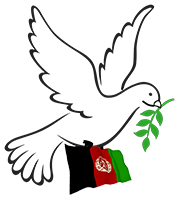
Chile, Costa Rica, Spain, France, Luxembourg, and Mexico have referred the case of women’s rights violations in Afghanistan to the International Criminal Court (ICC).
These six countries called on the ICC prosecutor on Thursday to investigate the ongoing and systematic violations of the rights of women and girls in Afghanistan.
The Ministry of Foreign Affairs of Chile announced on Thursday, November 28, that due to the deteriorating conditions and the critical situation for women and girls in Afghanistan, the case has been referred to the ICC.
This highlights the international concern over the worsening human rights crisis in the country.
According to the report, the ICC prosecutor resumed investigations into Afghanistan in 2022, after they were paused in 2020 at the request of Afghan officials. This resumption emphasizes the urgency of addressing the ongoing human rights abuses in the country.
The six countries involved in the referral have specifically requested the ICC to focus on the situation of Afghan women and girls, who are facing constant and systematic violations of their rights. They have urged the prosecutor to consider the crimes committed against women and girls since the Taliban regained power in 2021.
The referral to the ICC marks a significant step in the international community’s response to the human rights violations in Afghanistan. If the investigations yield evidence of crimes against Afghan women and girls, it could lead to increased political and diplomatic pressure on the current administration, including potential international condemnation and sanctions.
The plight of Afghan women and girls has become a focal point of international concern. The restrictions on their basic rights, including access to education, work, and public life, have led to a severe humanitarian crisis.
The referral of this case to the ICC may not only lead to greater international scrutiny of the Taliban’s actions but could also pave the way for legal consequences for the leaders responsible for these widespread violations.
 Afghanistan Peace Campaign
Afghanistan Peace Campaign


